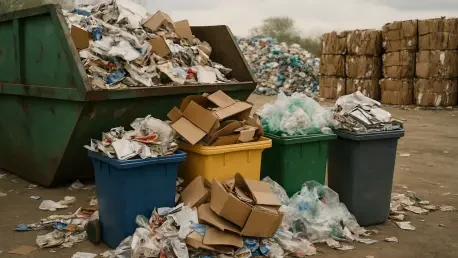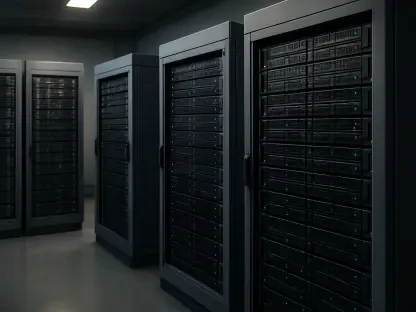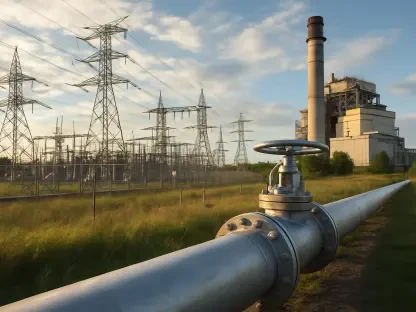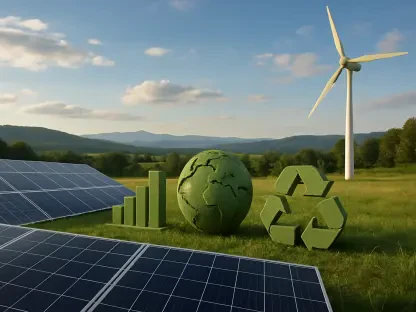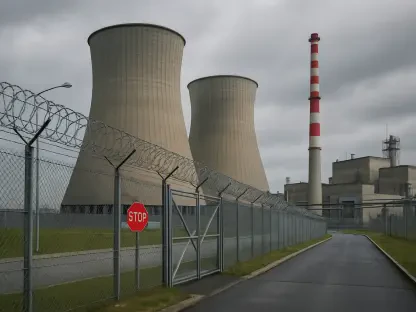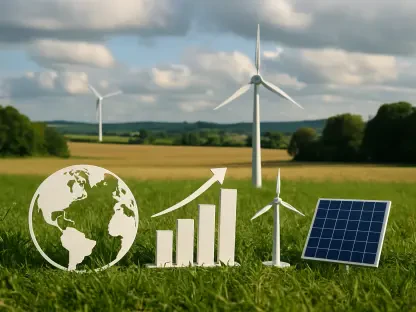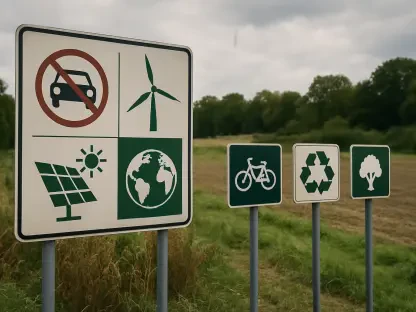Across the United States, a quiet revolution is unfolding as landfills transform from mere waste disposal sites into vital sources of renewable energy through biogas capture, redefining waste management by harnessing methane—a powerful greenhouse gas emitted from decomposing trash—and converting it into usable energy forms like electricity, heat, and renewable natural gas (RNG). The surge in landfill biogas facilities over recent years reflects a broader commitment to sustainability, cutting harmful emissions while powering millions of homes and vehicles. Beyond environmental benefits, this trend is sparking economic growth with substantial investments and job creation, positioning biogas as a cornerstone of the nation’s energy future. As technology and policy align to support this sector, the potential for further expansion looms large, promising an even greater impact on both energy security and climate goals.
Remarkable Rise in Facility Numbers
The growth of landfill biogas facilities in the U.S. paints a picture of rapid advancement and increasing reliance on sustainable energy solutions. Data from the American Biogas Council (ABC) reveals that 589 such facilities are now operational nationwide, marking an 18.5% increase since 2020. Over this period, more than 90 new sites have come online, pushing the annual biogas capture capacity to an impressive 521 billion cubic feet (Bcf). This volume is substantial enough to meet the electricity demands of 3.3 million households or to fuel 5.2 million passenger vehicles annually. The momentum is undeniable, with 2024 witnessing a historic spike of 56.3 Bcf in added capacity, a testament to the sector’s accelerating pace. Supported by over $1 billion in annual investments during 2023 and 2024, this expansion underscores the financial commitment driving the industry forward and highlights its growing role in the national energy mix.
This remarkable rise isn’t just about numbers; it reflects a strategic shift in how waste is perceived and utilized. Landfill biogas facilities are turning a once-overlooked byproduct into a valuable resource, aligning with broader environmental objectives to reduce methane emissions. The scale of energy production from these sites demonstrates their capacity to address significant portions of domestic energy needs, particularly in residential and transportation sectors. Unlike traditional fossil fuels, biogas offers a renewable alternative that mitigates climate impact while leveraging existing infrastructure at landfills. The financial backing, averaging a billion dollars yearly in recent times, signals strong confidence from both public and private stakeholders. As these facilities continue to multiply, they pave the way for innovative waste-to-energy models, setting a precedent for other industries to follow in transforming liabilities into assets for a greener future.
Evolving Uses of Captured Biogas
A notable transformation is occurring in the application of biogas harvested from landfills, with a marked pivot toward renewable natural gas (RNG) production. Once predominantly used for electricity and heating, biogas output now sees 40% directed to RNG, a significant jump from just 19% in 2020. Of the 92 facilities launched since 2020, a majority—77 to be exact—are dedicated to refining biogas into RNG, producing 540.5 Bcf annually, which can fuel 2.1 million vehicles. This shift caters to a rising demand for cleaner transportation fuels, positioning RNG as a versatile and eco-friendly option. Meanwhile, the remaining 60% of biogas, roughly 312.5 Bcf, still supports electricity generation and direct heating, ensuring millions of homes benefit from this renewable source. This dual-purpose approach showcases the adaptability of biogas in meeting diverse energy needs.
The evolution in biogas utilization reflects changing market dynamics and technological advancements that make RNG production more viable and appealing. The focus on RNG addresses a critical need for sustainable alternatives in the transportation sector, where reducing carbon footprints is increasingly prioritized. By upgrading biogas into a form that can fuel vehicles, these facilities are directly contributing to cleaner air and reduced reliance on traditional gasoline. At the same time, maintaining a strong presence in electricity and heating ensures that biogas remains a reliable energy source for communities nationwide. This balance prevents over-dependence on a single application, spreading the benefits across multiple sectors. As technology continues to improve, the efficiency of RNG production is likely to rise, potentially shifting the balance further while still preserving the essential role of biogas in powering households through more conventional means.
State-Level Leadership in Biogas Production
Certain states are emerging as frontrunners in the biogas landscape, driving national progress with significant capacity and investment. Pennsylvania stands out with the highest annual landfill biogas capture at 56.6 Bcf, hosting three of the country’s largest facilities, demonstrating its pivotal role in the industry. California, on the other hand, leads in sheer numbers with 55 operational facilities and tops the charts in capital investment at $1.4 billion, narrowly ahead of Pennsylvania. Other states like Texas, Michigan, and Illinois are also key contributors, with Illinois showing the most substantial capacity growth from 2023 onward. This geographic spread indicates that the biogas movement is not confined to a single region but is gaining traction across diverse areas, each leveraging local resources and policy support to bolster renewable energy efforts.
The leadership displayed by these states highlights the importance of regional strengths in scaling up biogas initiatives. Pennsylvania’s high capture capacity benefits from large-scale facilities that maximize output, serving as models for efficiency and impact. California’s edge in investment reflects a robust commitment to infrastructure and innovation, fostering a higher number of projects that collectively amplify the state’s influence. Meanwhile, the contributions from Texas, Michigan, and Illinois underscore how varied economic and environmental priorities can converge to support a common goal. Illinois’ recent capacity surge suggests that newer players can quickly make significant strides with the right focus and resources. Together, these state-level efforts create a mosaic of progress, illustrating that a nationwide push for biogas can thrive through localized strategies tailored to specific regional advantages and challenges.
Vast Horizons for Biogas Expansion
Even with the current achievements, the potential for biogas growth remains immense, offering a promising path for future energy solutions. According to a 2024 report cited by the ABC, 741 municipal solid waste landfills are identified as suitable for biogas development. Since that assessment, 31 new facilities have become operational, with 27 more under construction and 79 in the planning stages. If fully realized, these sites could yield an additional 1.8 trillion cubic feet of biogas each year, sufficient to power 11.3 million additional homes or fuel 17.6 million more vehicles. This untapped reserve represents a massive opportunity to scale up renewable energy production, further reducing greenhouse gas emissions while meeting escalating energy demands across the country.
Addressing this potential will require overcoming barriers such as high initial costs and regulatory complexities, but the rewards are substantial. Developing these additional landfill sites into biogas facilities could significantly enhance national energy independence, providing a sustainable alternative to conventional fuels. The environmental benefits are equally compelling, as capturing methane from these locations would prevent its release into the atmosphere, curbing a major contributor to climate change. Moreover, the economic ripple effects—through job creation and investment opportunities—could revitalize communities near these landfills. Policymakers and industry leaders will need to collaborate on incentives and streamlined processes to accelerate development. As momentum builds, the vision of transforming hundreds more landfills into energy hubs could redefine the intersection of waste management and renewable energy, setting a benchmark for sustainable progress in the years ahead.
